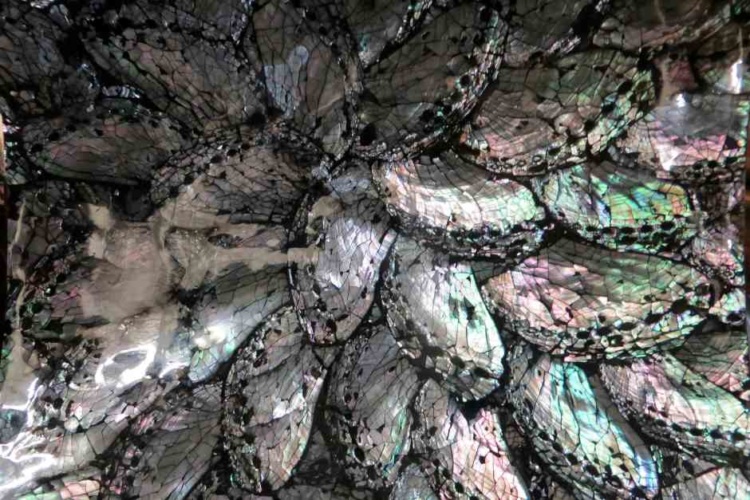The material – which was inspired by the tough cellular skin of the grapefruit and the fracture resistant shells of the abalone sea creature – is made from alumina ceramic spheres encased in a cellular aluminium, metallic foam structure and works by turning back the force of a cutting tool on itself.
During tests described in Nature’s Scientific Reports the non-cuttable material - dubbed Proteus after the shape-changing mythical god - could not be cut by angle grinders, drills or high-pressure water jets.

When cut with an angle grinder or drill, the interlocking vibrational connection created by the ceramic spheres inside the casing blunts the cutting disc or drill bit.
The ceramics also fragment into fine particles, which fill the cellular structure of the material and harden as the speed of the cutting tool is increased.
More nature inspired innovations from The Engineer
New material mimics nature to regulate temperature
Water jets are also ineffective because the curved surfaces of the ceramic spheres widen the jet to substantially reduces its speed and weaken its cutting capacity.
The team claims that cutting the material is like cutting through a jelly filled with nuggets: if you get through the jelly you hit the nuggets and the material vibrates in such a way that it destroys the cutting disc or drill bit.
The researchers claim that Proteus could be used to make bike locks, lightweight armour and protective equipment for people who work with cutting tools.
The research into the non-cuttable material was led by Dr Stefan Szyniszewski, Assistant Professor of Applied Mechanics, in Durham’s Department of Engineering. The work also included groups from the universities of Surrey and Stirling in the UK, plus teams from the Fraunhofer Institute for Machine Tools and Forming Technology IWU in Chemnitz, Fraunhofer Institute for Wood Research, Wilhelm-Klauditz-Institut WKI, Hannover, and Leibniz University Hannover.




Glasgow trial explores AR cues for autonomous road safety
They've ploughed into a few vulnerable road users in the past. Making that less likely will make it spectacularly easy to stop the traffic for...